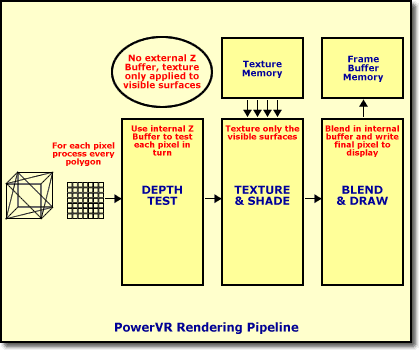A Speedy Tiler: Kyro II on Hercules' 3D Prophet 4500
Tile Based Rendering, Continued
PowerVR's rendering pipeline as is used on the Kyro II is significantly different from the classic approach. The z-buffer has basically been done away with. Textures are only loaded if a visible object requires it. The whole procedure is skipped for hidden objects.
Sounds simple in theory, but the options for the alternative TBR procedure are, in practice, somewhat limited. The entire screen first has to be divided up into small tiles. The Kyro II uses tiles that are 32x16 pixels in size. At a resolution of 1024 x 768, that makes for 1536 tiles. Don't worry, though, you can't see them when they are finally displayed on-screen. The great thing about PowerVR tiling is that every tile fits into the on-chip buffer. That means that the tiles don't need to be copied to video memory first.
After calculating all the tiles, the Kyro II applies deferred texturing, a process we have described previously. By verifying whether an object is visible or not, the chip avoids overdrawing. Textures only need to be loaded for visible areas.
Get Tom's Hardware's best news and in-depth reviews, straight to your inbox.
Current page: Tile Based Rendering, Continued
Prev Page Details Of Tile Based Rendering (TBR) Next Page Chip Features
